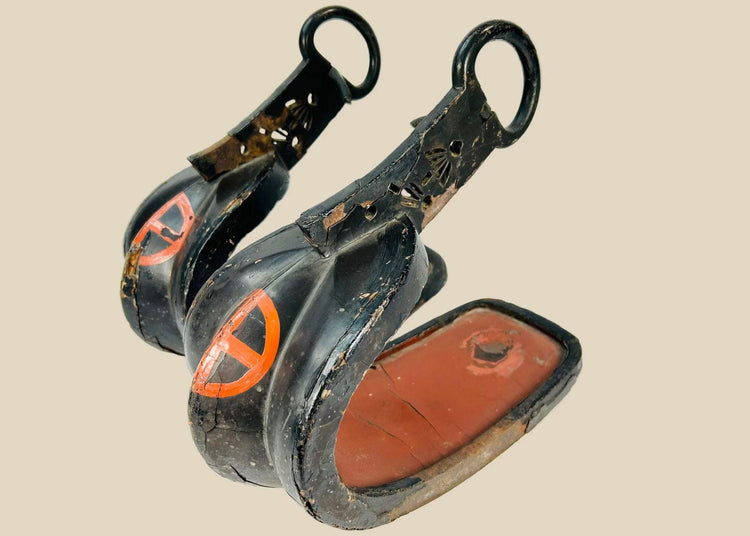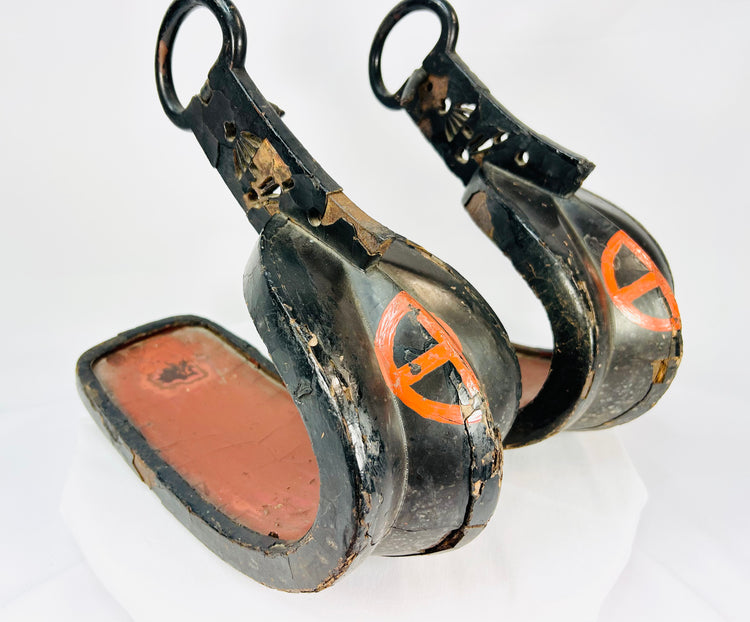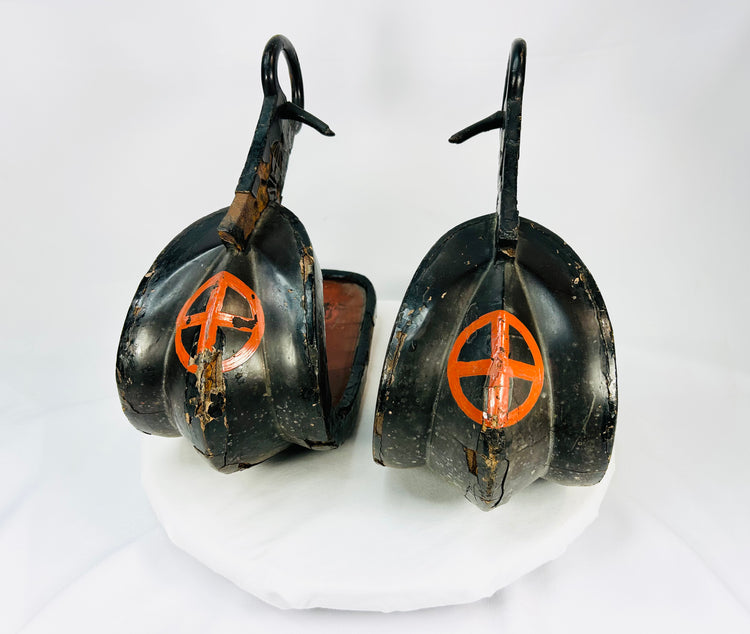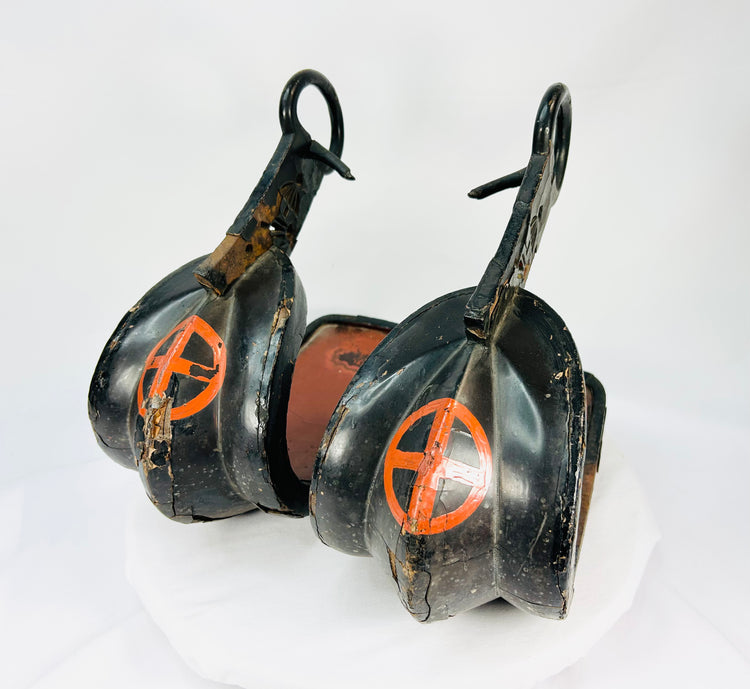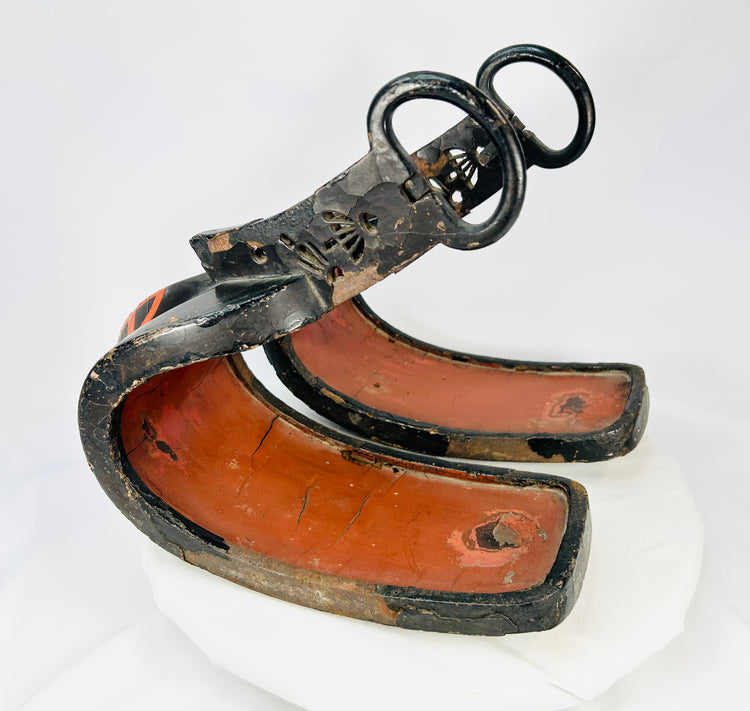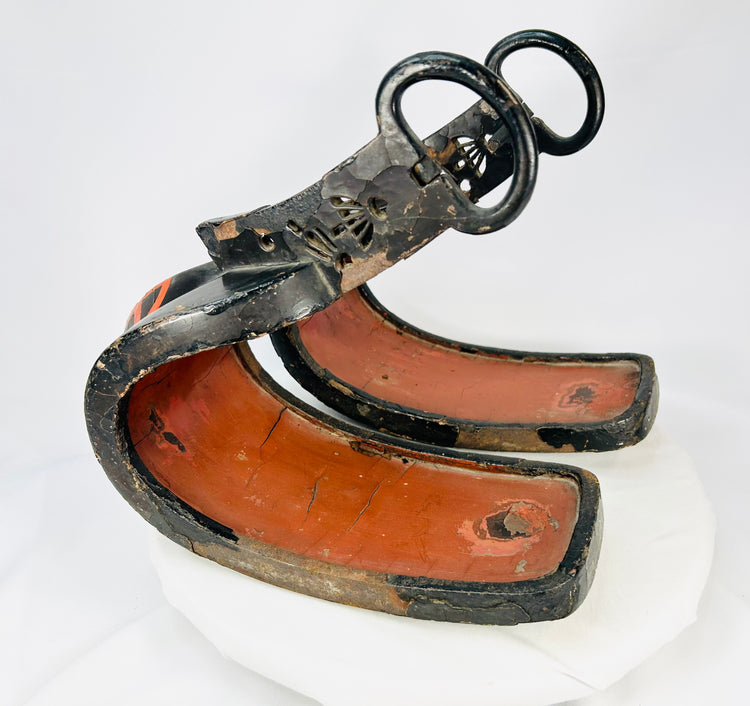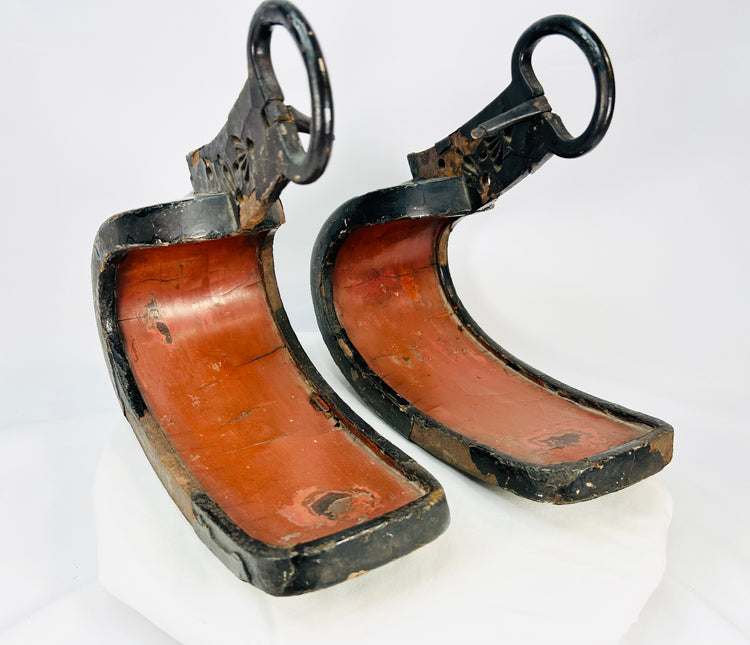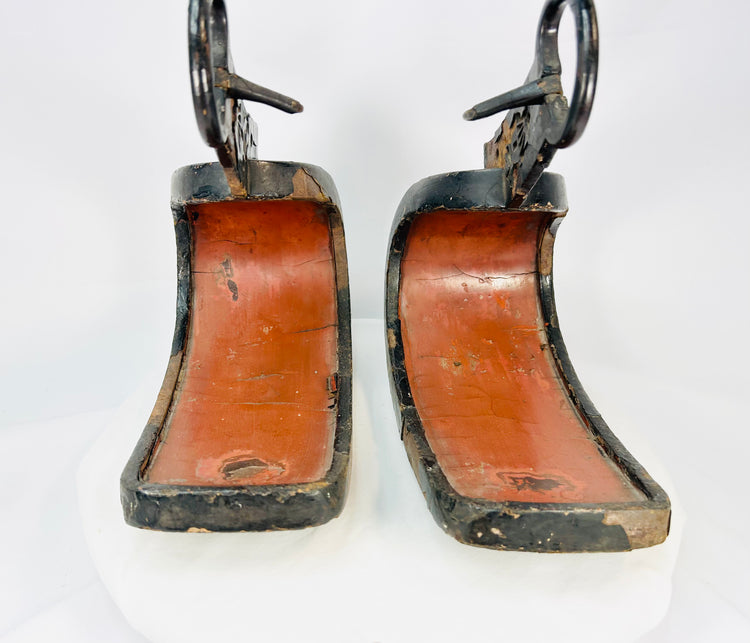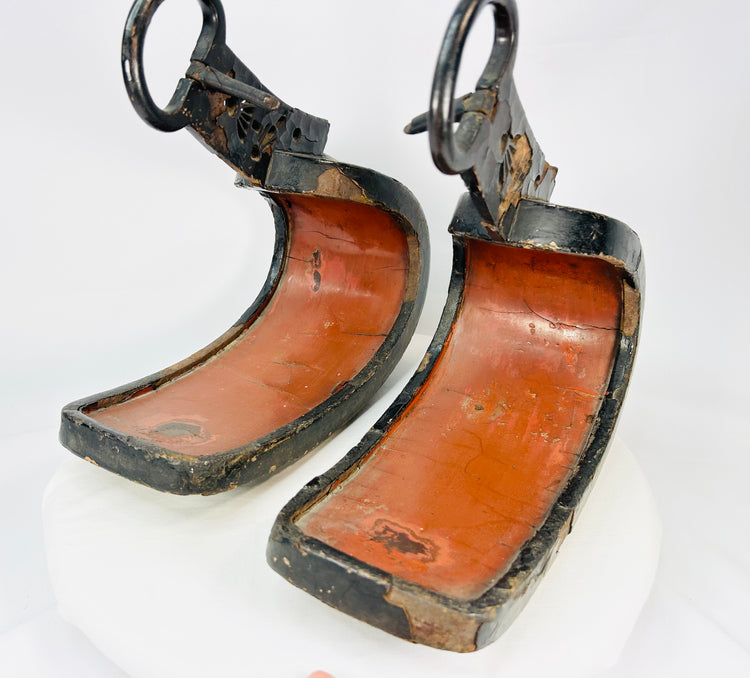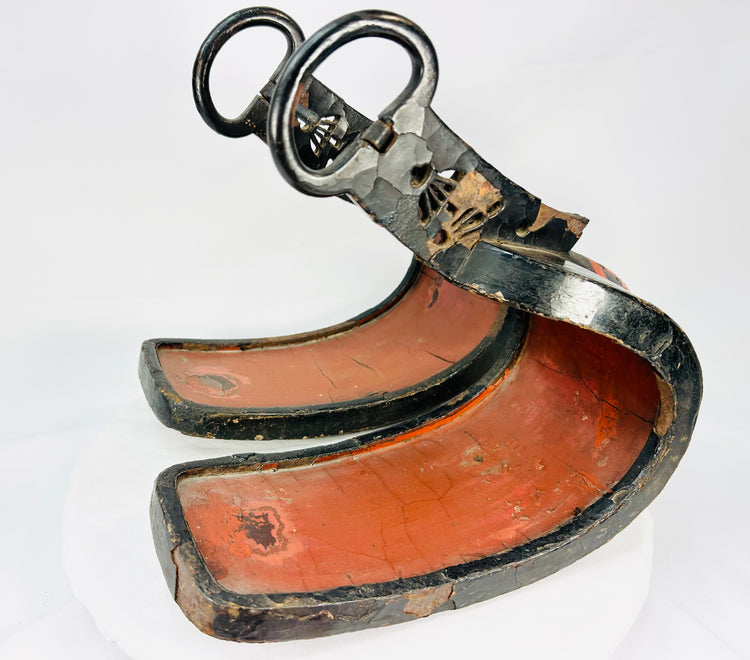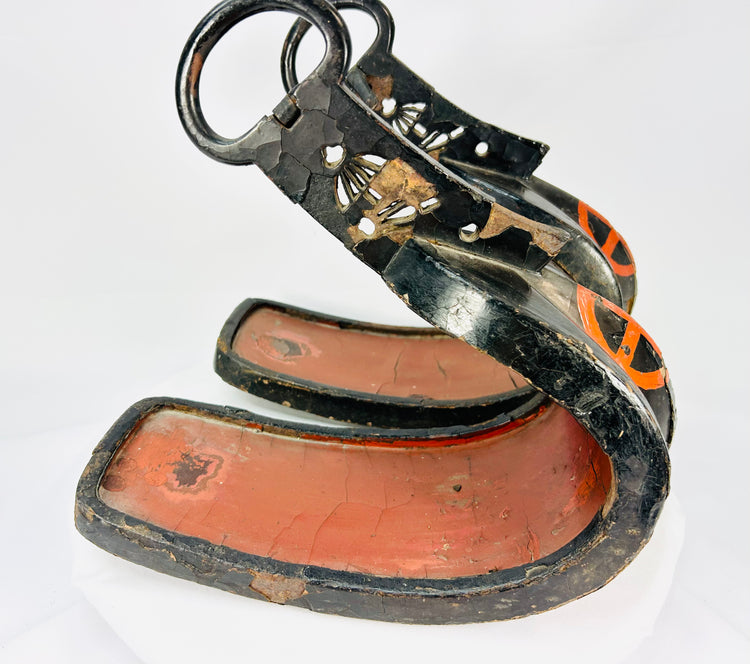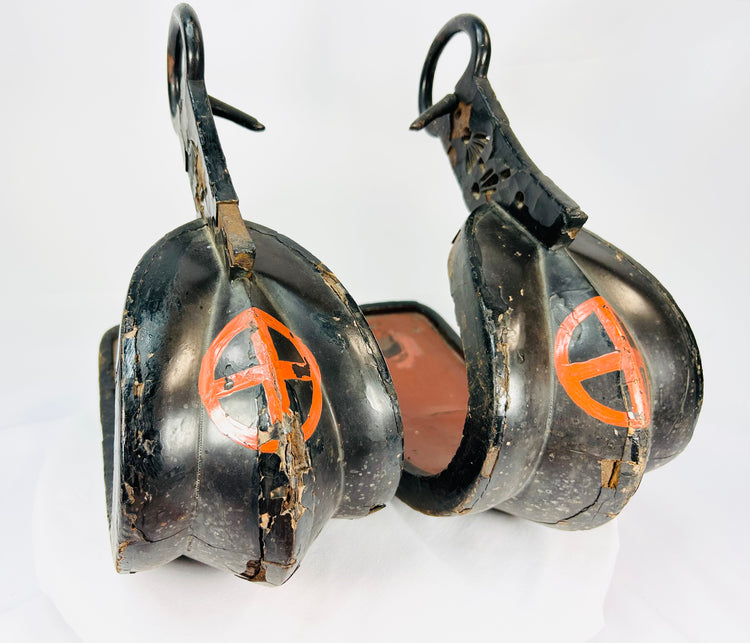Pair of Japanese Lacquered Samurai Stirrups | with Cross-in-Circle Mon | Edo–Meiji | Circa 1800–1880
Description
More
Less
Historical Context & Origin
Region: Japan, likely Satsuma Domain (Kyūshū)
Object: Pair of Samurai stirrups (abumi) with clan crest
Materials: Lacquered wood (urushi) with forged iron hangers; polychrome pigments
Period: Late Edo to early Meiji, ca. 1800–1880
Description
Handsome, deep-bodied Japanese abumi (stirrups) formed with the classic spoon-shaped, high-arched profile and wide footbeds for secure riding. The exteriors are finished in glossy black urushi lacquer; the interiors in cinnabar-red lacquer. To the front of each toe is a bold roundel enclosing a cross (maru-ni-jūji), the well-known crest of the Shimazu (Satsuma) clan. Pierced iron hangers with large suspension rings top each stirrup.
The size and robust curvature are typical of late Edo pieces used by mounted samurai. The painted clan mon strongly suggests Satsuma affiliation; as with most surviving accoutrements, specific family ownership cannot be guaranteed.
Features
- Matched pair of Edo/Meiji Japanese abumi (right & left)
- Black lacquer exterior / red interior, with painted Shimazu (Satsuma) crest on the toes
- Forged iron hangers with pierced ornament and large rings
- Deep, curved footbeds—classic late Edo riding form
- Striking display pair with authentic surface age
Cultural Significance
Abumi were essential elements of the samurai harness. Lacquer protected the wood from weather, while clan crests advertised allegiance. The cross-in-circle mon is synonymous with the Shimazu rulers of Satsuma, famed for their martial prowess and distinctive arts.
Condition
Well-traveled, stable display condition with age commensurate wear: scattered lacquer losses, chips, cracks, and splits (especially at toes and edges), abrasions and flaking to the iron hangers, interior surface craquelure, and old repairs/patches. Structurally sound for display; not suited for riding use.
Dimensions (each, approximate)
Length: 11.5 in
Width: 5.35 in
Height: 10.75 in
Age
Late Edo to early Meiji period, circa 1800–1880
Learn More
Explore Our Other Japanese Samurai Artifacts: Authentic Muromachi Era Samurai Armor and Japanese Samurai Do-Maru Armour
View More Armour From This Era at The Tokyo National Museum
Read About The Development of Samurai Armor Throughout History
Description
Historical Context & Origin
Region: Japan, likely Satsuma Domain (Kyūshū)
Object: Pair of Samurai stirrups (abumi) with clan crest
Materials: Lacquered wood (urushi) with forged iron hangers; polychrome pigments
Period: Late Edo to early Meiji, ca. 1800–1880
Description
Handsome, deep-bodied Japanese abumi (stirrups) formed with the classic spoon-shaped, high-arched profile and wide footbeds for secure riding. The exteriors are finished in glossy black urushi lacquer; the interiors in cinnabar-red lacquer. To the front of each toe is a bold roundel enclosing a cross (maru-ni-jūji), the well-known crest of the Shimazu (Satsuma) clan. Pierced iron hangers with large suspension rings top each stirrup.
The size and robust curvature are typical of late Edo pieces used by mounted samurai. The painted clan mon strongly suggests Satsuma affiliation; as with most surviving accoutrements, specific family ownership cannot be guaranteed.
Features
- Matched pair of Edo/Meiji Japanese abumi (right & left)
- Black lacquer exterior / red interior, with painted Shimazu (Satsuma) crest on the toes
- Forged iron hangers with pierced ornament and large rings
- Deep, curved footbeds—classic late Edo riding form
- Striking display pair with authentic surface age
Cultural Significance
Abumi were essential elements of the samurai harness. Lacquer protected the wood from weather, while clan crests advertised allegiance. The cross-in-circle mon is synonymous with the Shimazu rulers of Satsuma, famed for their martial prowess and distinctive arts.
Condition
Well-traveled, stable display condition with age commensurate wear: scattered lacquer losses, chips, cracks, and splits (especially at toes and edges), abrasions and flaking to the iron hangers, interior surface craquelure, and old repairs/patches. Structurally sound for display; not suited for riding use.
Dimensions (each, approximate)
Length: 11.5 in
Width: 5.35 in
Height: 10.75 in
Age
Late Edo to early Meiji period, circa 1800–1880
Learn More
Explore Our Other Japanese Samurai Artifacts: Authentic Muromachi Era Samurai Armor and Japanese Samurai Do-Maru Armour
View More Armour From This Era at The Tokyo National Museum
Read About The Development of Samurai Armor Throughout History
You May Also Like
































